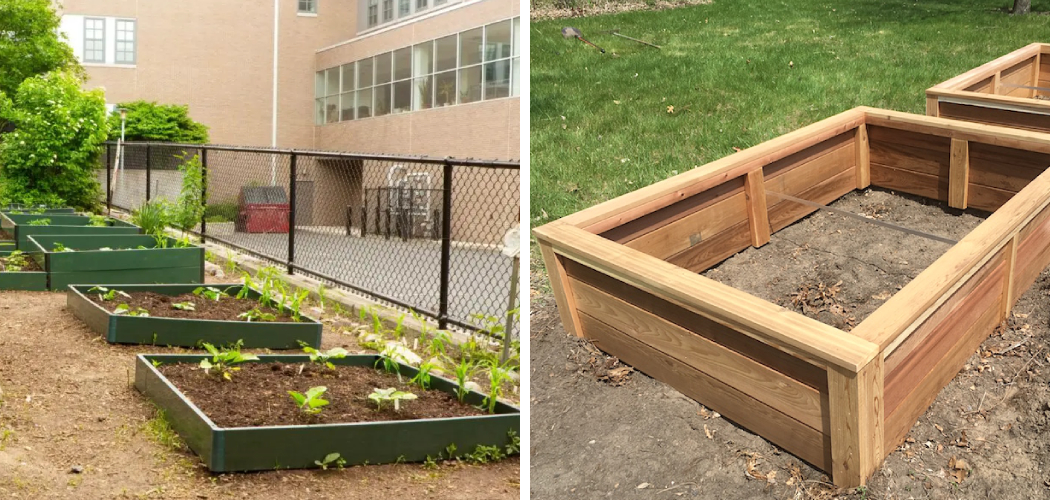To keep a raised bed from bowing, reinforce the sides with sturdy supports and use cross braces for added stability. Additionally, choose a durable material for the sides of the bed, such as pressure-treated wood or metal, and make sure the corners are properly secured.
Finally, consider adding a layer of landscape fabric or a weed barrier to prevent soil erosion and maintain the shape of the bed over time. Growing plants in raised beds has become a popular gardening method due to its numerous benefits.
Raised beds offer better soil drainage, improved soil quality, and easier weed control. However, over time, raised beds may start to bow or sag, compromising their structural integrity and hindering their functionality. To prevent this issue and ensure the longevity of your raised beds, it is essential to take certain steps to keep them from bowing. We will discuss effective techniques to maintain the shape and stability of your raised beds, allowing you to enjoy a successful and productive gardening experience.
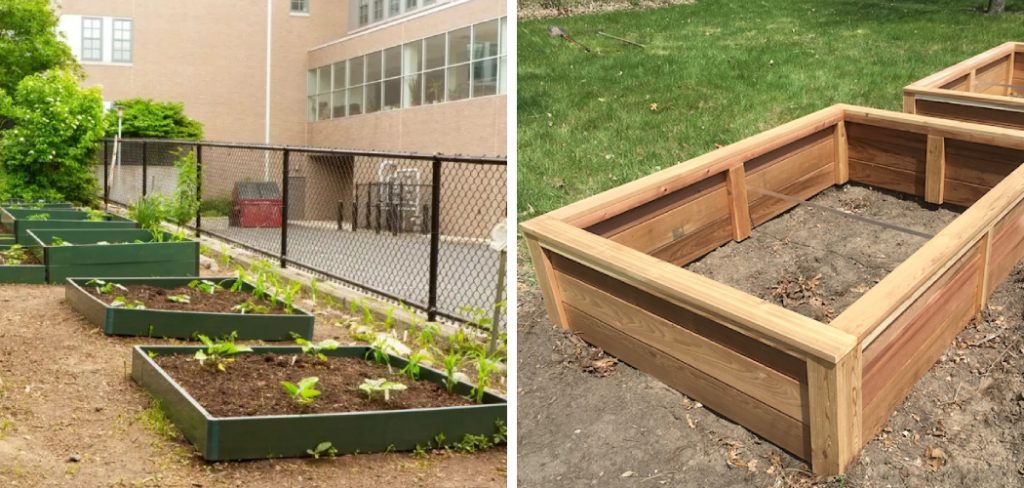
1. Choosing The Right Materials
Types Of Wood And Their Durability For Raised Beds
When it comes to choosing the right materials for your raised bed, the type of wood you opt for plays a crucial role in its longevity and overall effectiveness. Here, we will discuss the different types of wood commonly used for raised beds and their durability.
- Cedar wood: Cedar is often considered the gold standard for raised beds due to its natural resistance to rot and insects. It contains natural oils that act as preservatives, ensuring that your raised bed will last for many years. Additionally, cedar has a beautiful aesthetic appeal and can complement any garden style.
- Redwood: Similar to cedar, redwood is another excellent choice for raised beds due to its durability. It is naturally resistant to rot, decay, and pests, making it a long-lasting option for your garden. Redwood also has an attractive appearance, with a rich, reddish color that can add warmth to your outdoor space.
- Pressure-treated wood: Pressure-treated wood is a popular choice for raised beds, as it is treated with chemicals that protect it from rot, decay, and insects. However, it is important to note that the chemicals used in the treatment process can potentially leach into the soil over time. If you are growing edible plants in your raised bed, it is advisable to line the interior with a barrier to prevent direct contact between the soil and the pressure-treated wood.
- Recycled plastic lumber: For those looking for an eco-friendly option, recycled plastic lumber is an excellent alternative to traditional wood. It is made from recycled plastic materials, such as milk jugs and detergent bottles, making it a sustainable choice. Recycled plastic lumber is resistant to rot, decay, and pests, and it does not require any maintenance. Additionally, it can last for decades, making it a cost-effective solution in the long run.
Using Alternative Materials For Raised Beds
While wood is the most commonly used material for raised beds, there are alternative options available that can be equally effective. Consider the following materials for your raised bed project:
- Metal: Metal raised beds, such as those made from galvanized steel or corrugated metal, offer durability and a modern aesthetic. They are resistant to rot and rodents, making them a low-maintenance choice. However, it is important to be cautious with metal beds, as they can heat up more quickly in the sun, potentially affecting the temperature of the soil.
- Concrete blocks: Concrete blocks provide a sturdy and long-lasting alternative to traditional raised beds. They do not require any maintenance, and their solid structure prevents the risk of bowing or warping. Concrete blocks are also great for heat distribution, helping to regulate the temperature of the soil.
- Stone or bricks: Stone or brick raised beds are a visually appealing choice that can enhance the overall beauty of your garden. They are incredibly durable and can withstand the test of time. However, it is important to ensure proper drainage when using stone or bricks to prevent waterlogging.
Considering the dimensions and weight of the raised bed is essential in choosing the most suitable material. If you opt for heavier materials such as stone or concrete, ensure that the bed is placed on a solid foundation to prevent sinking or shifting.
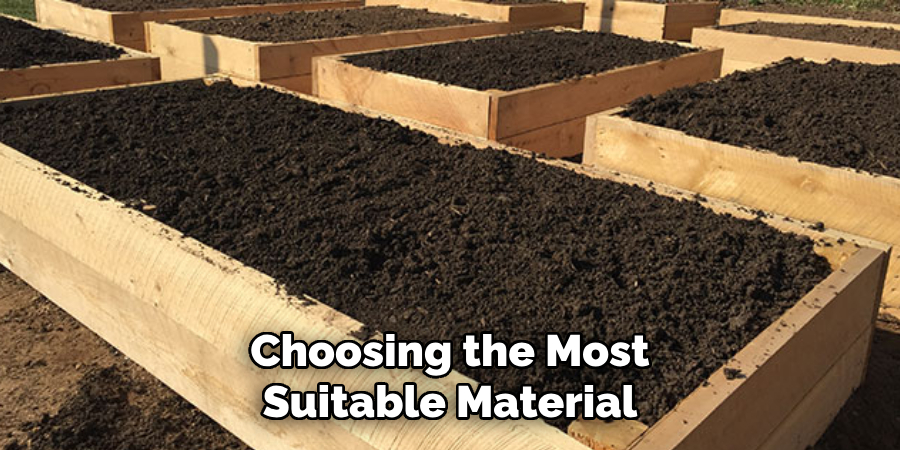
Remember, the choice of materials for your raised bed will depend on factors such as budget, aesthetic preferences, and the specific needs of your garden. Evaluate the pros and cons of each option to make an informed decision that will ensure the longevity and functionality of your raised bed.
2. Proper Construction Techniques
Building A Sturdy Frame For The Raised Bed
When it comes to constructing a raised bed, the frame is the foundation of its stability. Follow these key points to ensure a sturdy frame:
- Select durable and rot-resistant materials such as cedar or pressure-treated lumber.
- Cut the boards to the desired lengths, making sure they are all equal to create a balanced frame.
- Position the boards in a rectangular shape, with the longer boards forming the sides and the shorter boards for the ends.
- Use a level to ensure that the frame is even and straight.
- Secure the boards together using appropriate screws or nails, ensuring they are tightly fastened.
Securing The Corners And Connections
To prevent your raised bed from bowing, it’s crucial to secure the corners and connections effectively. Consider the following points:
- Attach corner brackets to reinforce the corners of the frame. These brackets add stability and prevent the bed from shifting or buckling.
- Make sure to use screws or nails specifically designed for outdoor use, as they are more resistant to corrosion.
- Install additional braces on longer sides of the frame, placing them evenly spaced along the length. This will prevent any sagging or bowing.
- For extra strength, you can also use metal plates or l-brackets to secure the connections.
Using Appropriate Screws Or Nails For Construction
The right choice of screws or nails can make a significant difference when it comes to the strength and durability of your raised bed. Follow these points:
- Opt for exterior-grade screws or nails that are resistant to rust and corrosion.
- Consider using galvanized or stainless steel fasteners, as they offer superior weather resistance.
- For a raised bed made of pressure-treated lumber, stainless steel fasteners are especially recommended to avoid a chemical reaction between the metal and the wood.
Remember, using the right screws or nails will ensure that your raised bed remains structurally sound and prevents any bowing or warping.
Adding Reinforcement Supports To Strengthen The Structure
To further enhance the stability and strength of your raised bed, consider adding reinforcement supports. Here’s how:
- Install metal stakes along the outer edges of the bed, driving them into the ground to secure the frame.
- Connect the stakes to the frame using strong wire or brackets, creating a rigid structure that resists any bending or shifting.
- You can also add cross supports within the bed, placing them diagonally between the corners. This will distribute the weight evenly and prevent the sides from bowing.
By incorporating these reinforcement supports, you can ensure that your raised bed remains sturdy and free from any bowing or weakening over time.
Remember, proper construction techniques are vital to prevent raised bed bowing. Building a sturdy frame, securing corners and connections, using appropriate screws or nails, and adding reinforcement supports will keep your raised bed in top form.
3. Reinforcing The Bed
One of the most effective ways to prevent a raised bed from bowing is by reinforcing it. Here are three proven methods to increase the stability and strength of your raised bed:
Using Braces Or Brackets To Prevent Bowing
- Attach braces or brackets to the interior corners of your raised bed frame.
- Secure the braces or brackets with screws or bolts, ensuring they are tightly fastened.
- These braces or brackets will help distribute the weight evenly and prevent the sides from bowing outwards due to pressure from the soil.
Adding Cross Supports Or Bracing Boards To Increase Stability
- Measure the width and length of your raised bed and cut your cross supports or bracing boards accordingly.
- Place these boards diagonally across the interior of the raised bed, forming an x-shape or a grid pattern.
- Secure the boards to the sides of the bed using screws or nails, making sure they are firmly attached.
- These cross supports or bracing boards will provide additional reinforcement and prevent the sides from bowing or bending.
Using Corner Braces To Reinforce Weak Points
- Identify any weak points in your raised bed, such as corners that appear unstable or prone to bowing.
- Install corner braces on these weak points, attaching them securely to both the side and bottom of the raised bed.
- Corner braces are typically made of metal and add extra strength and stability to the corners of your raised bed.
- Ensure that the corner braces are firmly fixed, helping to prevent any potential bowing or sagging at these vulnerable points.
By employing these reinforcement methods, you can increase the strength and stability of your raised bed, preventing it from bowing or bending under the weight of the soil and plants. Implement these strategies to ensure the longevity of your raised bed and enjoy a flourishing garden.
4. Controlling Soil Pressure
Controlling Soil Pressure
Raised beds are a popular choice for gardeners because they offer numerous benefits, from improved drainage to better soil conditions. However, one common issue that gardeners may encounter is bowing in the raised bed. Bowing occurs when the soil pressure exerted on the sides of the bed becomes too great, causing the walls to push outward.

Fortunately, there are steps you can take to prevent this from happening. In this section, we will explore four effective methods to control soil pressure and keep your raised bed in top shape.
Using Appropriate Soil Mix And Amendments
Using the right soil mix and amendments is crucial for maintaining the structural integrity of your raised bed. Here are some key points to keep in mind:
- Choose a well-draining soil mix that provides good air circulation for the plant roots.
- Incorporate organic matter, such as compost or aged manure, to improve soil structure and fertility.
- Consider adding perlite or vermiculite to the soil mix to enhance drainage capabilities.
- Avoid using heavy clay soils, as they can exert more pressure on the bed walls.
Avoiding Overfilling The Raised Bed
Overfilling the raised bed can place unnecessary strain on the sides, causing them to bow over time. Take note of the following tips:
- Fill the bed with soil leaving some space at the top to accommodate mulch or amendments.
- Avoid compacting the soil excessively when filling the bed.
- Level the soil evenly to distribute the pressure evenly across the bed walls.
Ensuring Proper Drainage To Prevent Water Accumulation
Water accumulation within the raised bed can worsen soil pressure and contribute to bowing. To ensure proper drainage, consider the following:
- Install drainage holes in the bottom of the raised bed to allow excess water to escape.
- Position the raised bed on a slight slope or implement a gentle gradient to encourage water runoff.
- Avoid overwatering the plants, as excessive moisture can lead to water pooling in the bed.
Managing Water Retention In The Soil
Finding the right balance of water retention in the soil is crucial for maintaining a healthy raised bed. Here are some tips to manage water retention effectively:
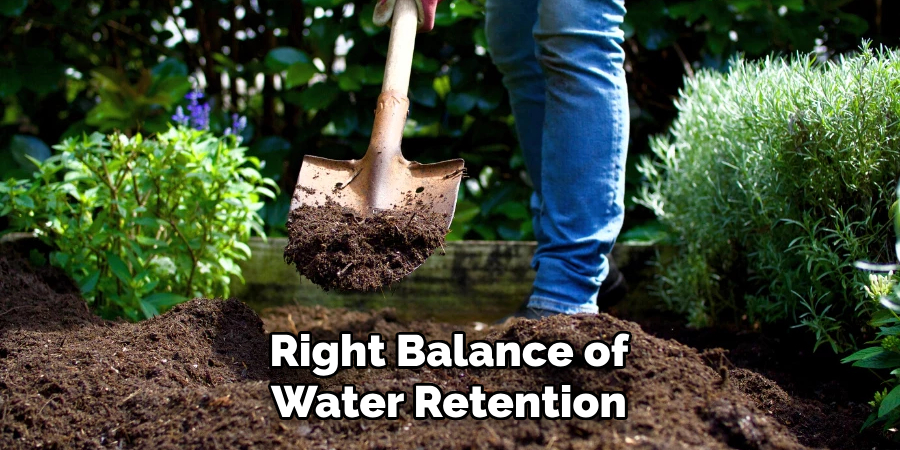
- Use organic mulch, such as straw or wood chips, to help retain moisture in the soil.
- Monitor the moisture levels regularly and water the plants only when necessary.
- Consider using raised bed liners or barriers to help regulate water retention.
By implementing these strategies, you can control soil pressure in your raised bed, preventing bowing and ensuring the longevity of your garden. Remember to choose the right soil mix, avoid overfilling, promote proper drainage, and manage water retention effectively. With proper care, your raised bed will remain sturdy and provide an ideal environment for your plants to thrive.
5. Regular Maintenance And Inspection
Checking For Signs Of Bowing And Addressing Them Promptly
Regular maintenance and inspection are essential to keeping your raised bed in good condition and preventing bowing. Here are some key points to consider:
- Regularly check the bed for signs of bowing, such as bulging sides or a sagging middle. Look for any shifting or unevenness in the structure.
- If you notice any signs of bowing, address them promptly to prevent further damage. Ignoring these issues can lead to more significant problems down the line.
- One effective way to address bowing is by reinforcing the bed with additional support. This can be done by adding extra stakes or bracing the sides with strong materials like metal or wood.
- Examine the corners of the bed closely, as these areas are more prone to bowing. Reinforcing the corners can help stabilize the entire structure.
- Consider using adjustable connectors or brackets to secure the bed’s corners and prevent any movement that could lead to bowing.
- Regularly monitor the soil level in your raised bed to ensure it remains evenly distributed. Uneven soil can contribute to bowing by exerting uneven pressure on the sides.
- Keep an eye out for any signs of rot or deterioration in the bed’s materials. Replace any damaged or weakened parts promptly to maintain the bed’s integrity.
Following these inspection and maintenance practices will help you catch signs of bowing early and take necessary steps to prevent further damage. Keeping your raised bed in good condition will ensure that it continues to provide a stable and productive gardening environment for years to come.
6. Alternative Techniques To Prevent Bowing
Alternative Techniques To Prevent Bowing
If you’re looking for alternative techniques to prevent your raised bed from bowing, there are several options to consider. These techniques can provide extra support and stability to ensure your raised bed stays in shape. Here are some effective methods:
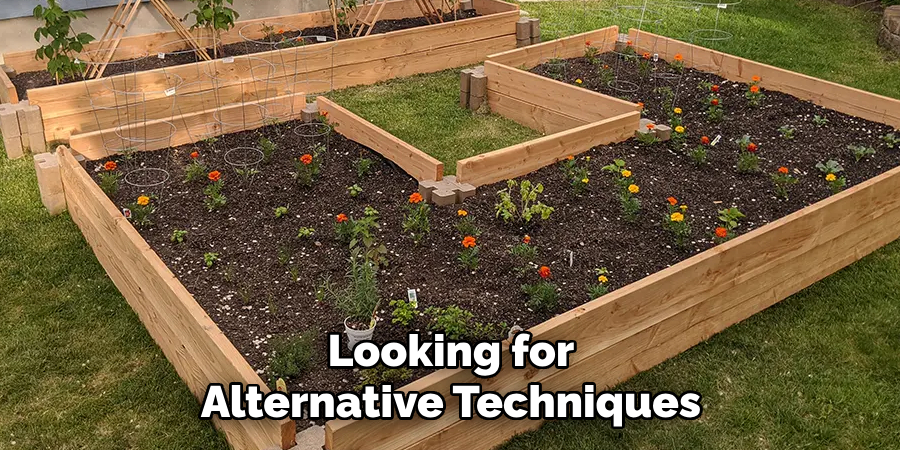
Installing Additional Support Structures, Such As Stakes Or Posts
- Drive stakes or posts into the ground at the corners and along the sides of the raised bed. This will create a sturdy framework to keep the bed from bowing.
- Attach supportive crossbars between the stakes or posts to add further reinforcement.
- Make sure the stakes or posts are securely anchored in the ground to provide maximum stability.
Creating Layered Raised Beds To Distribute Weight
- Build your raised bed using layers of different materials, such as rocks, gravel, or logs, to distribute the weight evenly.
- Start with a base layer of larger rocks or logs, followed by a layer of smaller rocks or gravel, and finally top it off with soil.
- This layered approach helps to disperse the pressure across the bed, minimizing the risk of bowing.
Using Wire Mesh Or Hardware Cloth For Added Stability
- Place wire mesh or hardware cloth at the bottom of your raised bed before adding the soil.
- This added layer helps to prevent the soil from shifting and puts less strain on the sides of the bed, reducing the chance of bowing.
- Opt for a sturdy and durable material that can withstand the pressure exerted by the soil.
Harnessing Natural Supports, Like Trellises Or Walls
- Incorporate trellises or walls into your raised bed design to provide natural support and prevent bowing.
- As plants grow, they can utilize these structures for climbing, reducing the pressure on the sides of the raised bed.
- Use materials such as wood or metal for the trellises or walls to ensure they can withstand the weight of the plants.
By implementing these alternative techniques, you can minimize the risk of your raised bed bowing and maintain a sturdy and functional gardening space. Choose the method that suits your needs and materials availability to ensure the longevity of your raised bed.
7. Tips And Best Practices
Properly Anchoring The Raised Bed To The Ground
One of the key factors in preventing raised beds from bowing is properly anchoring them to the ground. Here are some tips to ensure that your raised bed remains sturdy and secure:
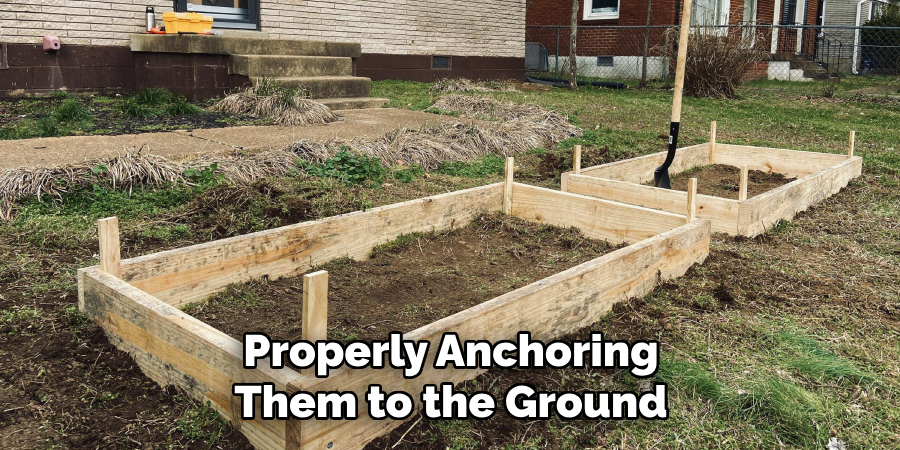
- Use sturdy corner brackets: Installing corner brackets at each corner of the raised bed helps to reinforce the structure and prevent bowing under pressure.
- Drive stakes into the ground: For added stability, drive stakes into the ground, each at a corner of the raised bed. Make sure the stakes are firmly secured to prevent movement.
- Install cross braces: Adding cross braces between the corners of the raised bed can provide additional support and prevent bowing. These can be installed diagonally across the bed and secured tightly.
Avoiding Excessive Weight On The Bed, Such As Heavy Machinery
Weight plays a significant role in causing raised beds to bow. To avoid this issue, consider the following tips to prevent excessive weight on your bed:
- Use lightweight soil: Opt for lightweight soil mixtures that provide adequate nutrients for your plants but are not overly heavy. This will help reduce the overall weight on the bed.
- Avoid heavy machinery: Refrain from placing heavy machinery or equipment directly on the bed as it can cause increased strain and lead to bowing. Instead, use separate pathways or designated areas for heavier equipment.
- Limit the number of plants: Overcrowding the raised bed with too many plants can contribute to excessive weight. Space out your plants adequately to ensure proper airflow and reduce the strain on the bed.
Considering The Surrounding Environment And Weather Conditions
The environment and weather conditions can have a significant impact on the stability of your raised bed. Take these factors into account to prevent bowing:
- Choose the right materials: Select materials for your raised bed that are suitable for your specific climate. Consider weather-resistant options like cedar or rot-resistant wood if you live in a humid or rainy area.
- Provide proper drainage: Ensure that your raised bed has adequate drainage to prevent water buildup. Excessive moisture can weaken the structure and cause bowing.
- Protect against extreme elements: If you live in an area with strong winds or harsh weather conditions, consider installing windbreaks or covers to protect your raised bed. This can help reduce the strain on the structure.
Maintaining A Balance Of Aesthetics And Functionality In The Raised Bed Design
While functionality is important, it’s also essential to design your raised bed with aesthetics in mind. Here’s how to strike a balance between both aspects:
- Consider the dimensions: Choose dimensions for your raised bed that fit your needs and available space. Ensure that it’s large enough to accommodate your plants while still being visually appealing.
- Use decorative elements: Incorporate decorative elements into the design, such as trellises or ornamental features, to add visual interest.
- Use complementary materials: Select materials that complement your existing outdoor décor and landscape. This will help the raised bed seamlessly blend in with its surroundings.
- Maintain cleanliness: Regularly clean and maintain your raised bed to keep it looking its best. Remove weeds and debris, and periodically apply a protective sealant or stain to preserve the appearance.
Remember, implementing proper anchoring techniques, avoiding excessive weight, considering the environment, and maintaining a balance of aesthetics and functionality will go a long way in keeping your raised bed from bowing.
Frequently Asked Questions Of How To Keep Raised Bed From Bowing
How Can I Prevent My Raised Bed From Bowing?
To prevent your raised bed from bowing, make sure to use thick and durable materials for the bed’s walls. Avoid overfilling the bed to prevent excessive pressure. Additionally, consider reinforcing the corners and using sturdy support stakes to maintain the bed’s shape.
Regularly inspect and replace any damaged or weakened sections to prevent bowing.
What Causes A Raised Bed To Bow?
A raised bed can bow due to excessive weight from soil and plants. The pressure from the soil can cause the walls to push outwards and bow. Additionally, poor construction using weak or thin materials can lead to bowing. Overfilling the bed with soil can also contribute to the pressure and eventual bowing of the walls.
Can I Use A Specific Type Of Wood To Prevent Bowing?
Yes, certain types of wood are more resistant to bowing. Cedar and redwood are excellent choices for raised beds as they are naturally resistant to decay and insect damage. These woods are also dimensionally stable and less likely to warp or bow.
Avoid using pine or other softwoods, as they are more prone to bowing over time.
Should I Use Corner Braces To Prevent Bowing?
Using corner braces can be beneficial in preventing bowing. These braces provide additional support to the corners of the raised bed, preventing them from pushing outwards. It is recommended to use metal or wooden corner braces that are securely attached to both the top and bottom of the corners.
This added reinforcement helps maintain the shape and stability of the bed.
How Often Should I Check For Bowing In My Raised Bed?
Regularly checking for bowing in your raised bed is important to prevent any long-term structural damage. It is recommended to inspect the bed at least once a month, especially during the growing season when the soil can put more pressure on the walls.
Promptly address any signs of bowing by reinforcing or replacing weakened sections to ensure the bed’s stability.
Conclusion
To prevent your raised bed from bowing, it is crucial to choose the right materials and take proper precautions. Start by selecting sturdy boards that can withstand the weight of the soil and plants. Reinforce the corners with metal brackets or braces to provide additional support.
Another effective technique is to install vertical stakes at regular intervals along the sides of the bed, which will help prevent bowing and maintain the structural integrity. Additionally, consider installing a cross-brace system using metal wire or strong nylon rope to further strengthen the construction.
Regular maintenance is also essential, such as checking for signs of bowing or sagging and making necessary repairs promptly. By following these steps and investing a little extra effort in the construction and maintenance of your raised bed, you can ensure its longevity and prevent bowing for years to come.

